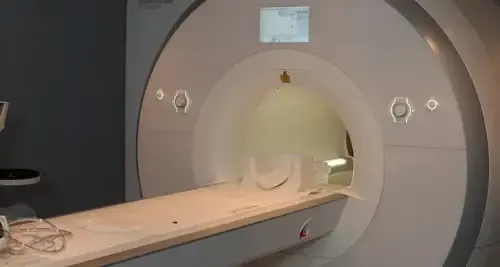Ankle Arthrosis
" At the Clinica we have been using arthroscopy for more than 30 years and we have been updating the different procedures for other joints, using the techniques currently available".
DR. ANDRÉS VALENTÍ AZCÁRATE
SPECIALIST. ORTHOPEDIC SURGERY AND TRAUMATOLOGY DEPARTMENT

Ankle osteoarthritis is the progressive wear and tear of the joint surfaces that make up the ankle, tibia, talus and fibula.
The osteoarthritis of the ankle is not as habitual as the one of hip or the one of knee, but it causes that the person who suffers it sees as his life and capacity of movement are very limited.
The ankle acts as a great shock absorber of the lower limb and distributes the forces in each leg, half forward and half backward. This function is executed through a bone behind the ankle, the talus, which is precisely the one that wears out over time.

What are the symptoms of osteoarthritis of the ankle?
The patient feels pain in the throat of the foot itself, a feeling of pressure that makes him tired more and difficult to walk.
In addition, the walking time decreases and the person ends up not being able to walk a few meters in a row.
The end of the process is the impossibility of walking, so the person must always choose to use transportation.
The most common symptoms are:
- Joint pain.
- Functional disability.
- Inflammation of the joint.
- Loss of strength.
- Articular rigidity.
Do you have any of these symptoms?
You may have osteoarthritis in your ankle
What causes osteoarthritis of the ankle?
The causes of wear and tear in osteoarthritis of the ankle lie, on the one hand, in the sequelae of trauma and fractures, but may also be due to the sequelae of osteochondritis of the ankle.
Finally, we also find osteoarthritis of the ankle without a known cause or idiopathic.
How can osteoarthritis of the ankle be prevented?
Some hygienic and conservative measures can slow down the progression of osteoarthritis.
Advice inevitably involves modifying activity. Contact sports, running, jumping and turning are not recommended.
Exercise in the swimming pool, bodybuilding and cycling are highly recommended to maintain mobility and strength. In addition, they help to maintain the appropriate weight, because it is logical that excess weight will worsen the symptoms and the prognosis.
How is osteoarthritis of the ankle diagnosed?

A medical history is important in diagnosing osteoarthritis of the ankle, with emphasis on the traumatic history the ankle has been subjected to. Next, the painful points are explored, the external aspect of the joint with its possible deformities, the joint mobility and the walking pattern.
The image diagnosis is based on the simple radiological study. X-rays allow the diagnosis of osteoarthritis and its evolutionary state, assessing osteocartilaginous lesions and specifying the position of osteophytes and foreign bodies.
In most cases, no further imaging tests are necessary. Sometimes it is useful to complete the imaging study with tests such as MRI or CT. With them, the characteristics of the osteoarthritis and the affectation of other neighboring joints can be better evaluated.
How is osteoarthritis of the ankle treated?
The aim of treatment is to relieve pain and maintain functional capacity
Initial treatment of ankle osteoarthritis is based on the use of insoles to better accommodate the foot and reduce the impact force of the gait on the ankle.
Hyaluronic acid or corticoid infiltrations have also given good results in the initial degrees of arthrosis. In more advanced cases, surgery is recommended.
Ankle arthroscopy allows for debridement or cleaning of the joint with a minimal incision and rapid recovery.
Arthrodesis or ankle fixation is performed in very severe cases where joint destruction is very evident. The rest of the joints supply the movement of the ankle.
In selected cases, you can opt for the total ankle prosthesis, which allows to preserve the mobility of the joint. In most cases of patients with advanced ankle arthrosis, the best option is fixation, since even if movement is lost, quality of life is gained.
The ankle prosthesis allows greater mobility, but the risk of loosening and mobilization or wear and tear of the components is high if a significant physical activity is performed and for years.
Where do we treat it?
IN NAVARRE AND MADRID
The Department of Orthopedic Surgery and Traumatology
of the Clínica Universidad de Navarra
The Department of Orthopedic Surgery and Traumatology covers the full spectrum of congenital or acquired conditions of the musculoskeletal system including trauma and its aftermath.
Since 1986, the Clinica Universidad de Navarra has had an excellent bank of osteotendinous tissue for bone grafting and offers the best therapeutic alternatives.
Organized in care units
- Hip and knee.
- Spine.
- Upper extremity.
- Pediatric orthopedics.
- Ankle and foot.
- Musculoskeletal tumors.

Why at the Clinica?
- Experts in arthroscopic surgery.
- Highly qualified professionals who perform pioneering techniques to solve traumatological injuries.
- One of the centers with the most experience in bone tumors.




















